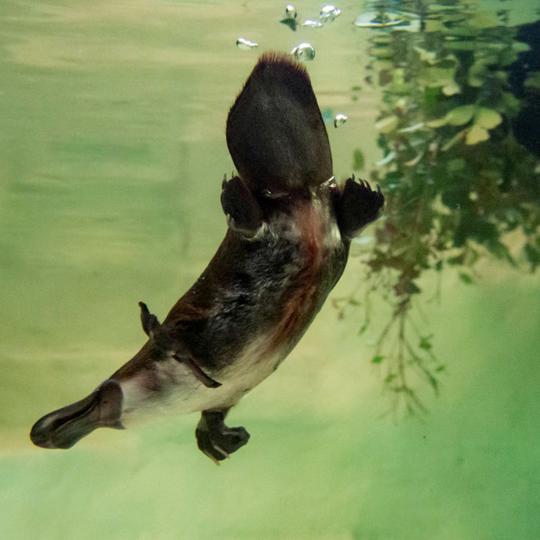Platypus
Platypus are one of only two monotremes (egg-laying mammals) surviving in the world.
Platypuses are also unique among animals for their electroreception abilities. Their soft bills are covered with leathery skin that contains special nerves, allowing them to detect electrical fields generated by small aquatic animals (their dinner).

Platypuses are one of the more peculiar looking Australian animals. They have thick brown fur and webbed front paws that they use like paddles. Adult platypuses have no teeth. They can stay underwater for several minutes and store food in their cheeks, before coming to the surface to grind it up and swallow.
When European settlers first arrived in Australia and sent a platypus specimen to England, British researchers believed the Australians were playing a practical joke on them and had stitched the feet and bill of a duck onto the body of a rat.
Platypuses are not threatened, but researchers have noticed a decline in numbers over the last decade.
You can help preserve a healthy environment for platypuses by using phosphate-free detergents and reducing or eliminating your use of plastic bags, which are deadly for the animals of our creeks, rivers and seas.
Healesville Sanctuary is internationally renowned for its role in platypus care and research, and was the first in the world to breed the platypus in captivity. Meeting platypuses at Healesville Sanctuary can help you connect with and learn about the Zoo’s conservation programs.
Facts about Platypuses
- The male platypus has a venomous spur on the inside of its hind feet.
- The platypus makes a soft growling sound when disturbed.

